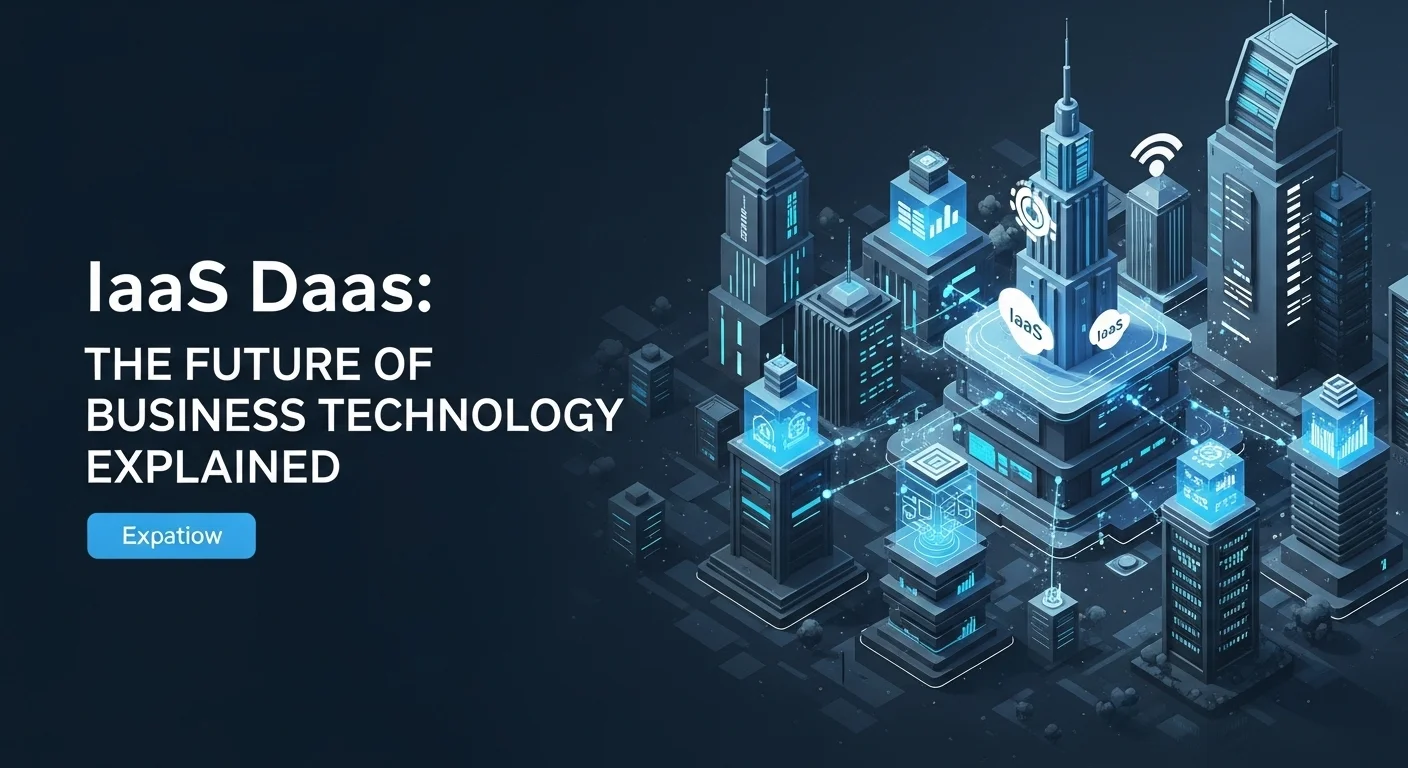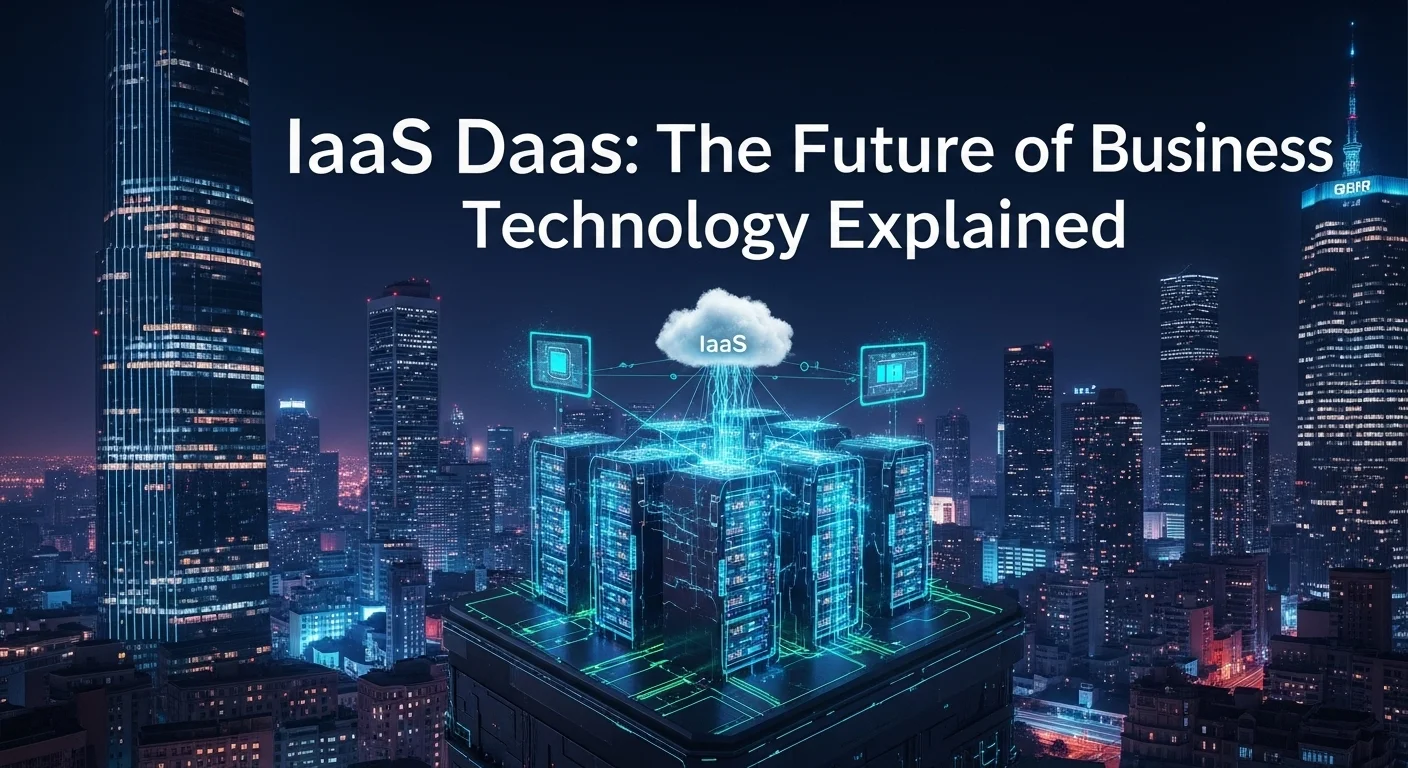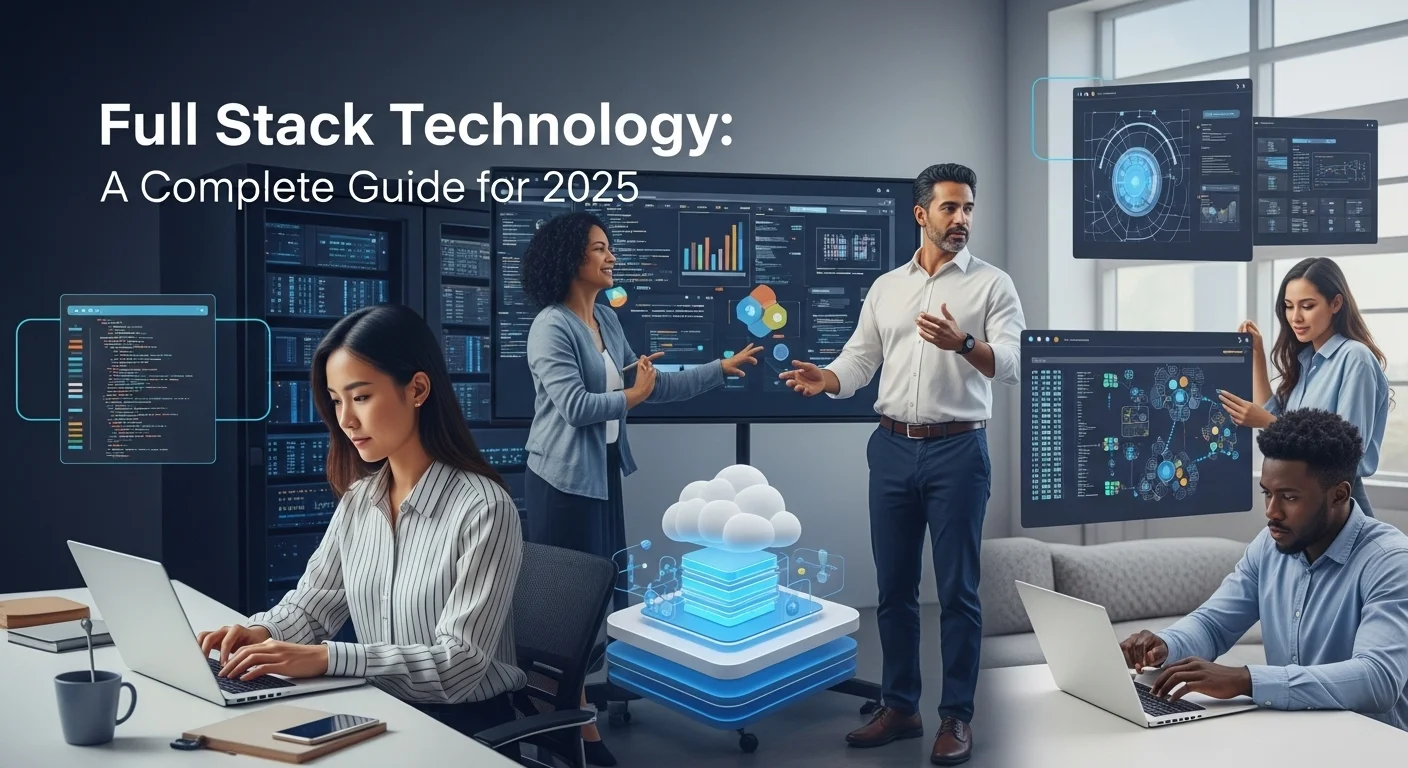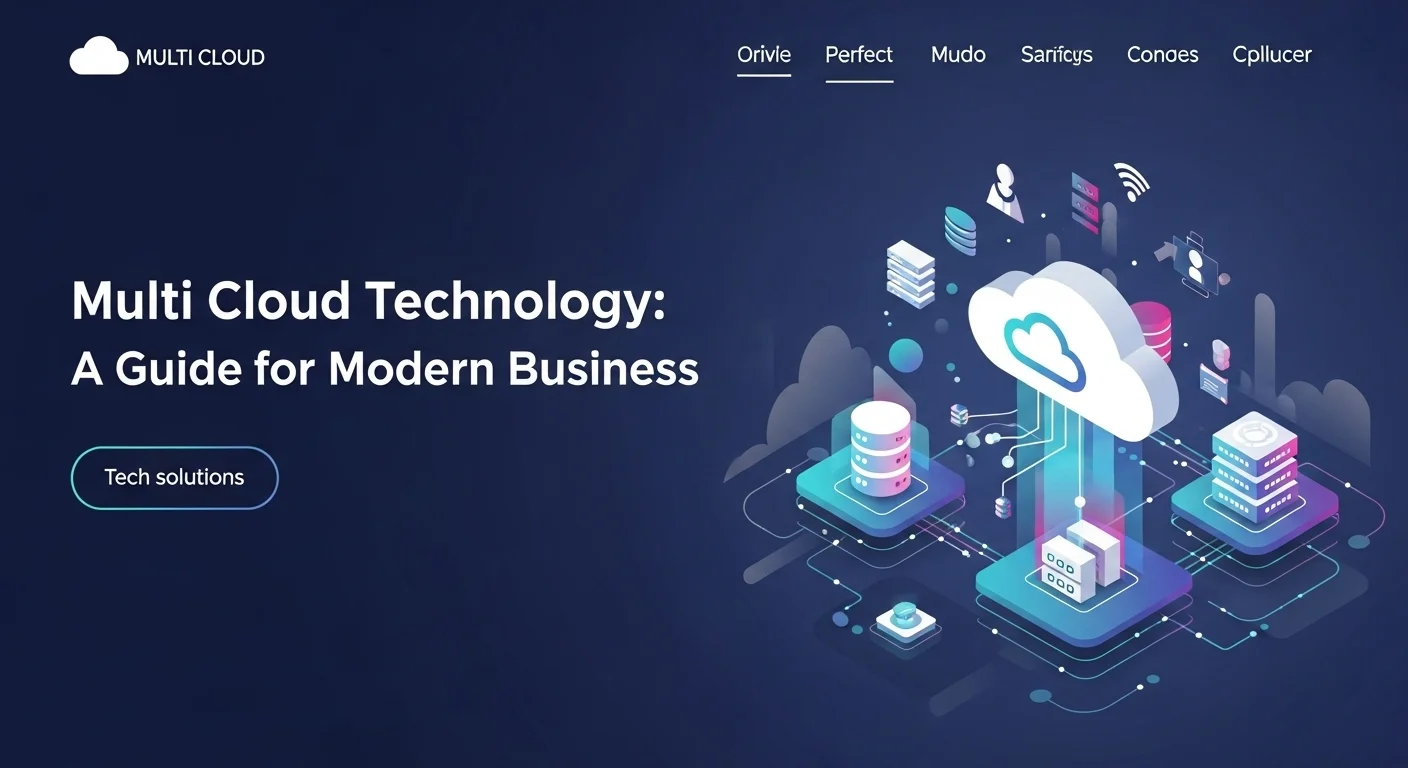IaaS and DaaS: My Personal Guide to the Cloud Tech Powering Modern Business

Executive Summary
In my years working with cloud technology, I've seen countless businesses transform. The secret sauce behind much of this magic? Two acronyms that sound complicated but are beautifully simple in concept: IaaS (Infrastructure as a Service) and DaaS (Desktop as a Service). Think of IaaS as your flexible, digital foundation—all the servers and storage you need, without buying a single piece of hardware. DaaS builds on this by giving your team a secure, virtual desktop they can access from anywhere. In this guide, I'm going to pull back the curtain on this powerful combination. We'll explore what each part does, how they work together to support everything from remote work to business continuity, and why understanding this model is absolutely critical for any leader looking to innovate. This isn't just for the tech crowd; it's a roadmap for anyone wanting to build a smarter, more agile business in our cloud-first world.
Table of Contents
Table of Contents
- What Are IaaS and DaaS, Really?
- IaaS: The Bedrock of Your Cloud
- DaaS: Your Office, Anywhere
- The Real Magic: How IaaS and DaaS Work Together
- A Closer Look: Building DaaS on an IaaS Foundation
- Strategies for a Smart IaaS and DaaS Rollout
- Comparing Your Options: DaaS vs. The Old Way
- Pro Tips to Master Your IaaS & DaaS Setup
What Are IaaS and DaaS, Really?
The tech world loves its acronyms, but I always tell people not to get intimidated. When we talk about IaaS (Infrastructure as a Service) and DaaS (Desktop as a Service), we're really talking about two sides of the same revolutionary coin. They represent a fundamental shift in how businesses handle their technology, moving from owning physical hardware to 'renting' a complete, powerful environment in the cloud. To see why this is such a game-changer, let's break them down and look at how they create something special when they come together.
IaaS: The Bedrock of Your Cloud
I’ve always liked the analogy of building a house. Think of Infrastructure as a Service (IaaS) as renting a fully-serviced plot of land. You don't have to worry about laying the plumbing or connecting the electricity; the provider—like Amazon Web Services (AWS), Microsoft Azure, or Google Cloud—has already done that. You get the fundamental building blocks of computing, on-demand:
- Virtual Servers: Need more processing power for a big project? You can spin up a powerful virtual machine in minutes. No more waiting weeks to order and install a physical server.
- Cloud Storage: From massive archives to high-speed databases, you get access to virtually unlimited storage, and you only pay for what you actually use.
- Networking: IaaS gives you all the tools—virtual networks, load balancers, firewalls—to build a secure and complex network architecture without touching a single physical cable.
The beauty of IaaS is the control it gives you. I've worked with IT teams who've used this flexibility to build incredibly tailored systems. They save a fortune by shifting their spending from huge upfront hardware costs (CapEx) to a more manageable, pay-as-you-go operational cost (OpEx). The ability to scale up for a product launch and then scale back down is something that was just a dream with on-premise data centers.
DaaS: Your Office, Anywhere
Now, if IaaS is the land and utilities, Desktop as a Service (DaaS) is like getting a pre-fabricated, fully-furnished house delivered and set up for you. DaaS is a service that delivers a complete, secure desktop computer experience to your employees over the internet. They can log in from a laptop at home, a tablet in a café, or a simple thin client in the office and see their familiar work desktop, with all their apps and files ready to go.
From my experience, DaaS is a lifesaver for businesses for several key reasons:
- Total Flexibility: It’s the ultimate enabler for remote and hybrid work. Your team can be productive from anywhere.
- Fort Knox Security: This is a big one. The data isn't actually on your employee's laptop. It stays safe and sound in the cloud data center. If a laptop is lost or stolen, your company's sensitive information isn't compromised.
- Simplified Management: I remember the days of IT staff running from desk to desk to update software or fix issues. With DaaS, they can manage, update, and secure every single desktop from one central dashboard. It's a massive time-saver.
- Bulletproof Continuity: If an employee's computer dies, they can just grab another device, log in, and pick up right where they left off. Their virtual desktop was unaffected, waiting for them in the cloud.
The Real Magic: How IaaS and DaaS Work Together
Here’s where it all clicks. The term 'IaaS DaaS' really describes a dependency: DaaS solutions are almost always built on top of an IaaS platform. A DaaS provider like Citrix or VMware, or even a large company running its own DaaS, uses the servers, storage, and networking from an IaaS provider like Azure or AWS to power the whole system. This symbiotic relationship is the engine of modern IT. The immense, global scale of IaaS providers means a DaaS solution can deliver a fast, responsive desktop to an employee in Tokyo just as easily as it can to one in New York. Need to onboard 500 new employees? The IaaS foundation scales automatically to handle it. This layered approach, where services like DaaS leverage the power of IaaS, is the core idea behind a smart cloud strategy. It allows a business to pick the right tool for the job—using IaaS for custom apps, maybe SaaS for its CRM, and DaaS for its workforce—creating a flexible, powerful, and cost-effective tech ecosystem.

A Closer Look: Building DaaS on an IaaS Foundation
So, you're sold on the idea. But how does this 'IaaS DaaS' setup actually get built? It’s not black magic, but a well-thought-out architecture. Having been in the trenches on these projects, I can tell you it's about connecting the right pieces in the right way. Let's peek under the hood.
The Key Architectural Components
At its heart, deploying DaaS on IaaS is about creating a Virtual Desktop Infrastructure (VDI) in the cloud. Here are the essential parts you'll be working with:
- The IaaS Provider: This is your foundation. AWS, Azure, Google Cloud—your choice here often comes down to what your team already knows, your geographic needs, and specific features you might require.
- Virtual Machines (VMs): These are the digital engines running each user's desktop. The beauty of IaaS is that you can create different templates or 'gold images.' A standard VM for your admin team, and a beast with extra RAM and GPU power for your design team.
- Smart Storage: This is more crucial than people think. You can use 'persistent' storage, where each user's desktop and data are saved, so it's exactly as they left it every time they log in. Or, for roles like a call center, you might use 'non-persistent' desktops that reset to a clean slate after each session, which is great for security and simplicity.
- Networking and Security Layers: Using the IaaS platform, you create a private, isolated virtual network for your desktops. This is your digital fortress. You set up firewalls and access rules to meticulously control who and what can communicate with the virtual desktops, protecting them from the open internet.
- The Connection Broker: This is the air traffic controller. When a user tries to log in, the broker checks who they are, confirms they have permission, and connects them to an available virtual desktop. It's the brain of the DaaS operation.
- The Secure Gateway: To let users connect safely from anywhere in the world, a gateway service acts as a single, heavily guarded front door. It encrypts all the traffic, so even on public Wi-Fi, the connection is secure.
Getting this architecture right from the start, based on your specific user needs and security policies, is the difference between a smooth-running system and a constant headache. It’s about planning how all your cloud services—IaaS, PaaS, SaaS, and DaaS—will talk to each other securely.
Strategies for a Smart IaaS and DaaS Rollout
A DaaS project is a business transformation, not just an IT upgrade. I've seen projects succeed brilliantly and fail spectacularly, and the difference often comes down to strategy.
- Know Thy User: Before you do anything, talk to your people. What do they actually do all day? What apps are critical? Group them into 'personas'—the marketer, the accountant, the developer. This insight will guide every technical decision you make.
- Pilot, Then Scale: I can't stress this enough. Don't try to switch everyone over at once. Pick a small, diverse group for a pilot program. Let them kick the tires, find the bugs, and give you honest feedback. This process builds champions for the project and ensures a much smoother company-wide launch.
- Obsess Over User Experience (UX): If the virtual desktop is slow, your project is dead on arrival. The goal is for it to feel just as fast and responsive as the physical machine they're used to. This means choosing the right IaaS data center location and optimizing your network for low latency.
- Adopt a Zero Trust Mindset: In security, the mantra is 'never trust, always verify.' Just because you've centralized things doesn't mean you can relax. Require multi-factor authentication (MFA) for everyone. Assume every connection could be a threat until proven otherwise. This philosophy is vital across your entire cloud stack.
- Watch Your Wallet: The pay-as-you-go model is fantastic, but it requires discipline. Use the cost management tools from your IaaS provider. Set alerts. Shut down desktops automatically at night. Without governance, I've seen cloud bills creep up unexpectedly.
Comparing Your Options: DaaS vs. The Old Way
To really see the value, you have to look at what you're leaving behind.
- DaaS vs. On-Premise VDI: Traditional VDI meant buying and managing a mountain of expensive hardware in your own server room. It was slow to scale and a huge capital expense. DaaS on IaaS flips that model on its head—no hardware ownership, endless scalability, and predictable operational costs.
- DaaS vs. Physical Laptops: Managing hundreds of physical laptops is a logistical nightmare. You're constantly dealing with provisioning, patching, and the massive security risk of a lost or stolen device. DaaS centralizes everything, making management a breeze and keeping your data safe in the cloud, not on the laptop.
When you step back and look at the whole cloud landscape, you see that the smartest companies aren't just choosing one service. They're having a strategic conversation about what to rent (IaaS), what to subscribe to (SaaS, DaaS), and where to build (PaaS). A well-architected DaaS solution, running on a solid IaaS backbone, is a cornerstone of that modern strategy.

Pro Tips to Master Your IaaS & DaaS Setup
Getting your IaaS and DaaS environment up and running is a huge win. But in my experience, the best companies treat it as a living system, one that needs continuous tuning and care. To go from just 'using' the cloud to truly 'mastering' it, you need to focus on optimization, security, and smart governance. Here are the strategies I always share with my clients.
1. Your Users Won't Forgive a Laggy Desktop
Performance is everything. A slow, frustrating virtual desktop will crush productivity and user morale. Here’s how you ensure a top-tier experience:
- Fight Latency Like a Pro: Latency, the delay in data travel, is the number one enemy. Always choose an IaaS region physically close to your users. If your team is global, leverage the provider’s private network backbone to get a fast lane to the cloud, bypassing the congested public internet.
- Tailor the Machines, Not Just the Software: One size never fits all. Analyze what your users actually do. An engineer running complex simulations needs a very different virtual machine than a salesperson using a CRM. Monitor resource usage over time and adjust. Over-provisioning wastes money, but under-provisioning kills performance.
- Fine-Tune Your Display Protocol: The tech that streams the desktop image to the user (like HDX, Blast, or RDP) can be configured. Test different settings to optimize for your main use cases, whether it's crisp text for coding or smooth playback for video training.
2. Build a Fortress Around Your Cloud Desktops
Centralizing desktops is great for security, but it also creates a very valuable target for attackers. You need to build defenses in layers.
- Live by the 'Zero Trust' Rule: Don't trust any connection by default. Every single access attempt must be verified, every time. Multi-Factor Authentication (MFA) isn't optional; it's your first and most important line of defense.
- Secure the 'Last Mile'—The Endpoint: Even if your data is safe in the cloud, a compromised personal laptop can be a gateway for an attacker. Make sure any device connecting to your DaaS has basic protections like up-to-date antivirus and a firewall.
- Isolate and Contain: Use the virtual networking tools from your IaaS provider to create separate, sealed-off zones. Your finance department's desktops shouldn't be on the same virtual network as your guest contractors. This limits an attacker's ability to move around if they do get in.
- Be a Watchful Guardian: Use cloud security tools to constantly monitor for strange behavior. Who is logging in at 3 AM from a new country? Why is one user suddenly trying to access hundreds of files? Regular audits and active monitoring are non-negotiable.
3. Keep a Tight Leash on Costs
The cloud's flexibility is amazing, but without discipline, it can lead to runaway spending. Strong governance is your financial safeguard.
- Use the Tools You're Given: Every major IaaS provider has a dashboard for tracking costs, setting budgets, and getting alerts. Use them. Religiously. Tag every resource so you know exactly which department or project is spending what.
- Automate Your Savings: Are people using their desktops on Saturday night? Probably not. Create simple scripts or policies to automatically power down desktops during off-hours. These small savings per user add up to a huge amount over a year.
- Commit and Save: If you know you'll need a certain amount of computing power for the next year or three, use 'Reserved Instances' or 'Savings Plans'. By committing to your provider, you can get massive discounts—I've seen savings of over 40-60% compared to on-demand prices.
4. See the Bigger Picture: Integrate Everything
Your DaaS solution becomes exponentially more powerful when it's woven into your other cloud services. This is where you move beyond just replacing desktops and start truly innovating. For instance, integrate your DaaS with a cloud identity service for a seamless single sign-on (SSO) experience for your users. Connect it to cloud storage for easy archiving. For your developers, their virtual desktop can come pre-loaded with all the tools they need to connect directly to your development platforms (PaaS). This integrated approach turns your collection of services into a single, cohesive, and powerful business platform.
5. Stay Curious and Plan Ahead
The cloud moves incredibly fast. Today's best practice is tomorrow's old news. Keep up with new features from your providers. A great place to stay informed on where this is all heading is by reading expert analysis on the future of Desktop as a Service. By keeping an eye on the horizon, you ensure your IaaS DaaS strategy doesn't just solve today's problems, but sets you up for success for years to come.
Expert Reviews & Testimonials
Sarah Johnson, Business Owner ⭐⭐⭐
This was a good overview of IaaS and DaaS, but as a business owner, I would have loved to see a few more real-world case studies.
Mike Chen, IT Consultant ⭐⭐⭐⭐
A very helpful article on IaaS and DaaS. It definitely clarified the topic for me, though a couple of the more technical bits could have been a little simpler.
Emma Davis, Tech Expert ⭐⭐⭐⭐⭐
Fantastic article! So thorough and clear on IaaS and DaaS. This was perfect for my specialization, I understood everything completely.



